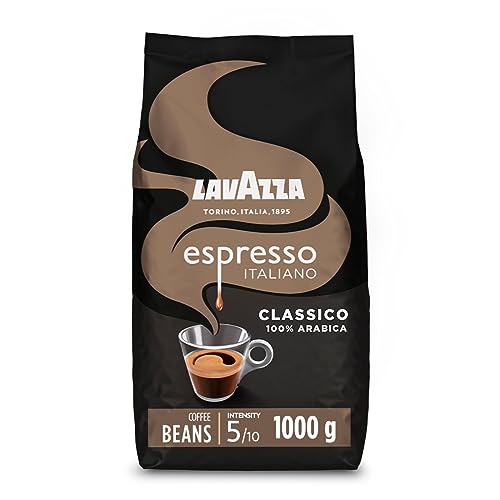Starbucks Coffee Beans 1kg
Before Peppermint Mocha and red holiday cups before the advent of red holiday cups and Peppermint Mocha Starbucks was just a cozy cafe in rainy Seattle. Its founders focused on selling whole bean coffee, but they didn't see the potential of espresso drinks.
This changed when Schultz stepped in. He was determined to show off his roasting and mixing techniques.
Origin
Before Starbucks coffee beans make it to your cup, they've been on a long and winding route. Coffee is cultivated mainly in the Coffee Belt. This area is located all over the world between the Tropics Cancer and Capricorn. The flavor of coffee beans is influenced by the climate, soil and the culture of the region. Starbucks sources its coffee from more than 30 countries around the globe.
Starbucks coffees are mainly made from Latin America, Africa and Asia-Pacific. These regions are renowned for their full-flavor, balance of acidity and weight. Starbucks also gets some of its coffee from the island of St. Helena, a volcanic tropical paradise located in the South Atlantic Ocean.
Starbucks coffee beans are roasted to perfection to give an incredibly smooth and delicious taste. The coffee beans are ground into a fine powder, and ready for brewing. The powder is then mixed with water and poured into a cup, creating an exquisite cup of espresso. The result is a cup that is full of flavor and energy.
Starbucks stores sell a variety of single-origin beans. While most Starbucks coffees come from blending different beans, they also have some varieties made from one bean. Single-origin Starbucks coffees come in various flavors, like chocolatey and fruity sweet and nutty. Some single-origin beans are certified organic.
Starbucks's beans come from all over the world however, they must meet certain requirements to be considered specialty. The term "specialty coffee" was only introduced in the 1980s, as cafes and roasters started to experiment with lighter roasting, manual techniques, and transparent sourcing. Starbucks hasn't yet begun making its coffee sourcing decisions based on these standards, but has since adopted them.
In addition, to ensure that its beans are grown in a responsible way, Starbucks works to improve the lives of the people who cultivate their coffee. It offers its coffee farmers a premium over the market price and helps to invest in their communities. It also promotes sustainability and works to reduce waste. This has led to the creation of new methods for growing coffee and practices that help protect the environment.
Roast
Starbucks buys its beans in bulk and roasts them in massive quantities. The roasting process takes between 10 and 15 minutes. The end result is that the beans are dark and roasted. Dark roasted beans possess an intense flavor, and a full body. The beans are then ground and shipped to stores and supermarkets in the form of a coffee grind. Most of the time, this ground coffee is not ideal for making the best cup of coffee because it is already bitter. A majority of people add sugar cream or milk or flavorings, as well as whipping cream to their coffee. This will not cover the bitterness of the coffee, but it can make the drink more appealing.
The beans begin to steam once they are placed in the roaster for the first time because of their internal moisture. The "first crack" is a sound that signals the start of the roasting process. At this point the sugars begin to caramelize and the bound-up water is released. At this point the structure of the beans is broken down and the oils begin to move outward. The final stage is the time where the majority of coffees are regarded as a city roast.
The beans are cool and then separated from any stones, or other impurities, which may have escaped from the roaster. They are then inspected by hand before being bagged and sold. Some beans have a dark spot, which is known as a quaker. These beans didn't change color and taste burned. This is a typical phenomenon and does not necessarily mean that the coffee is bad.
Often the beans are roasting in small batches, as little as 20 pounds at a time. These are called "micro-lots". This is because each coffee roast will be roasted in accordance with specifications developed by a Starbucks team of masters of coffee. The team of coffee experts creates distinctive profiles that are utilized by all Starbucks(r) roasting facilities around the globe. These profiles ensure that every cup of coffee is consistent and has a certain degree of body, flavour and aroma.
Flavor
Starbucks purchases their beans from the farms they come from so that they can improve the quality of their beans and ensure ethical sourcing. For every kilogram of coffee beans sold, Starbucks plant a tree. The beans are not branded by their origin, but certain blends are. Veranda is from Sumatra; Komodo Dragon is from Indonesian and Anniversary is a mix between african and central american beans. coffee bean supplier of the beans is distinctive and they make a silky velvety cup that has a delicate balance between sweetness and smoothness. Every sip is a feast of symphony flavors that leave pleasant notes on the palate.
Weight

The weight of starbucks coffee beans 1kg varies based on the type of blend. A Starbucks House Blend, for instance, weighs 14 oz per pound. Walmart's pound of Espresso Roast beans weighs 16 oz. This is equivalent to a 67% price premium at Starbucks when compared to Wal-Mart.
Starbucks' Pike Place Roast was named after Seattle's famous market. The light-medium roasting brings sweetness, balance, and smoothness to every cup. This blend made of beans from Latin America is perfect for Americano or espresso. This gourmet blend is packaged in a FlavorLock package to preserve and protect the flavor. This is Starbucks their signature coffee. A perfect choice for coffee lovers! Made from 100 percent Arabica beans. This is a great gift for Starbucks lovers.
